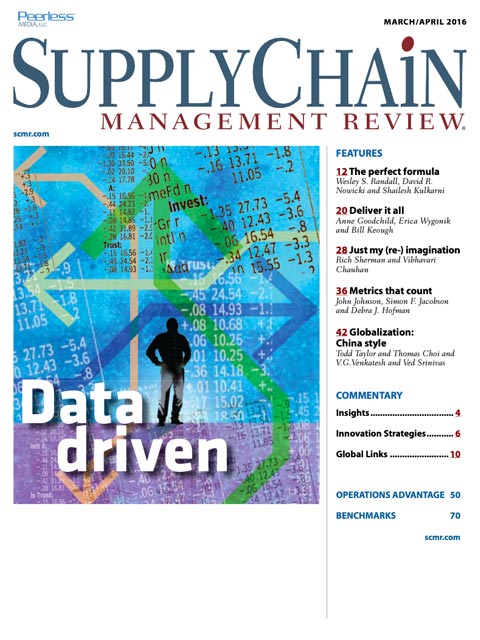Sorry, but your login has failed. Please recheck your login information and resubmit. If your subscription has expired, renew here.
March-April 2016
When I visit my millennial-aged daughter in Chicago, I’m amazed at the number of packages dropped off by UPS, FedEx and the USPS at her three-unit building on a daily basis. It’s as if she and her neighbors are single-handedly keeping Amazon in business. All those drop-offs got me to wondering: Does any of this make sense if you think about a carbon footprint? Rather than deliver millions of packages to one address at a time every day, wouldn’t it be more sustainable if we all just drove to the mall to do our shopping? After all, doesn’t research indicate that a signi cant percentage of consumers, especially millennial consumers like my… Browse this issue archive.Need Help? Contact customer service 847-559-7581 More options
Readers who were teenagers in the 1980s may remember driving to a Sam Goody store to buy music. You probably also remember your disappointment when sometimes the tape or CD wasn’t in stock when you arrived. Perhaps you returned to your car and headed for Tower Records to try your luck there.
Your kids would probably find this story inconceivable today. The advent of the Internet has profoundly altered consumer expectations. Immediate gratification is getting closer by the day; you can now obtain your favorite song in seconds, and order and receive physical goods in as little as a few hours in some urban areas.
Today’s ninth-grader expects to find any product she wants in seconds and order it right away on her smartphone. What’s more, she expects that the order will be accurate, complete, well-packed, and easy to return if desired.
 |
This complete article is available to subscribers
only. Click on Log In Now at the top of this article for full access. Or, Start your PLUS+ subscription for instant access. |
SC
MR
Sorry, but your login has failed. Please recheck your login information and resubmit. If your subscription has expired, renew here.
March-April 2016
When I visit my millennial-aged daughter in Chicago, I’m amazed at the number of packages dropped off by UPS, FedEx and the USPS at her three-unit building on a daily basis. It’s as if she and her neighbors are… Browse this issue archive. Access your online digital edition. Download a PDF file of the March-April 2016 issue.
 |
Download Article PDF |
Readers who were teenagers in the 1980s may remember driving to a Sam Goody store to buy music. You probably also remember your disappointment when sometimes the tape or CD wasn't in stock when you arrived. Perhaps you returned to your car and headed for Tower Records to try your luck there.
Your kids would probably find this story inconceivable today. The advent of the Internet has profoundly altered consumer expectations. Immediate gratification is getting closer by the day; you can now obtain your favorite song in seconds, and order and receive physical goods in as little as a few hours in some urban areas.
Today's ninth-grader expects to find any product she wants in seconds and order it right away on her smartphone. What's more, she expects that the order will be accurate, complete, well-packed, and easy to return if desired.
 |
SUBSCRIBERS: Click here to download PDF of the full article. |
SC
MR

Latest Supply Chain News
- Made in Mexico, manufactured by China
- Retail sales see gains in October, reports Commerce and NRF
- Balancing green and speed: Home delivery insights from the pandemic era
- AdventHealth named top healthcare supply chain by Gartner
- Geopolitical readiness in supply chains: Strategic challenges for leaders
- More News
Latest Podcast

 Explore
Explore
Topics
Latest Supply Chain News
- Made in Mexico, manufactured by China
- Retail sales see gains in October, reports Commerce and NRF
- Balancing green and speed: Home delivery insights from the pandemic era
- AdventHealth named top healthcare supply chain by Gartner
- Geopolitical readiness in supply chains: Strategic challenges for leaders
- Unlocking retention: The role employee engagement plays
- More latest news
Latest Resources

Subscribe

Supply Chain Management Review delivers the best industry content.

Editors’ Picks





